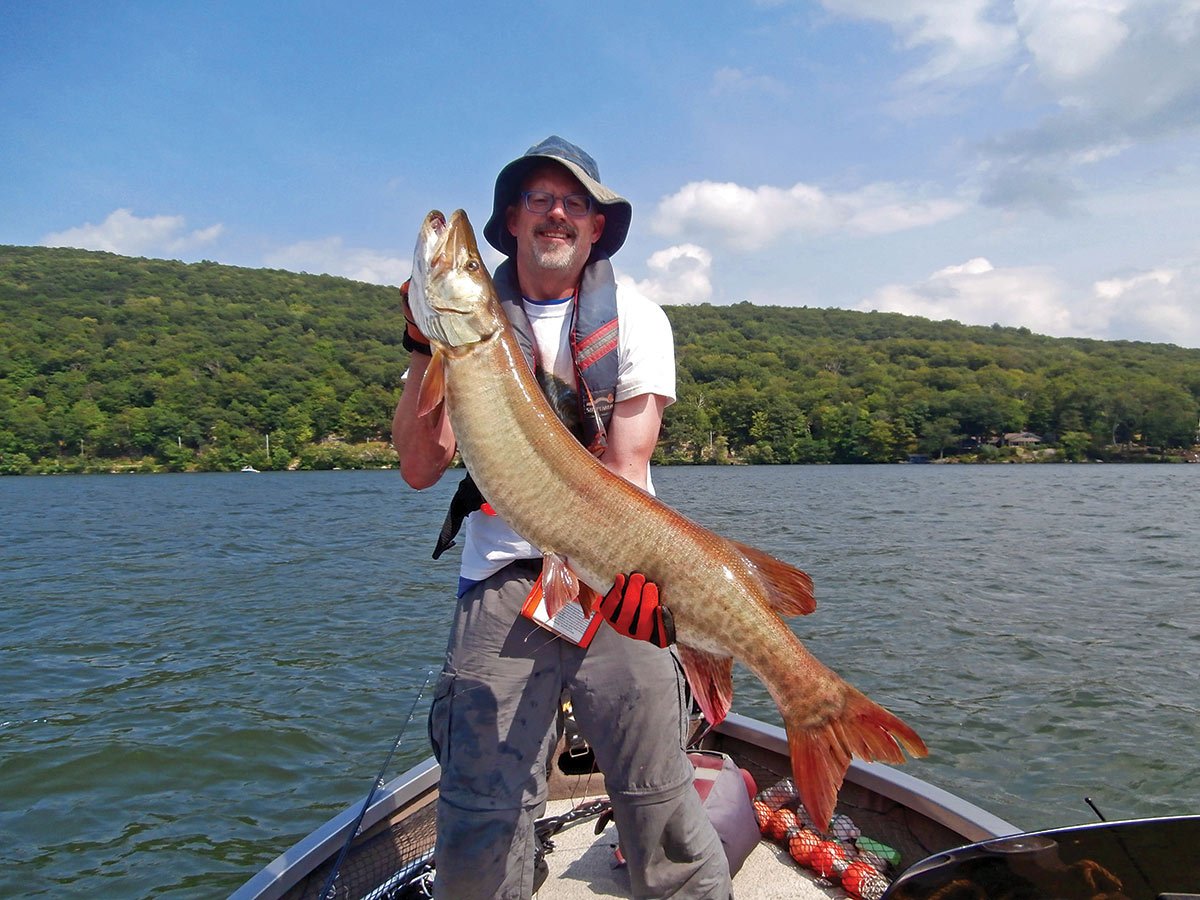
If battling trophy musky has been on your bucket list, you won’t have to travel far this year to scratch out a trophy.
Northeast anglers looking to battle a 50-inch muskie no longer have to travel to the upper mid-western locations or Canadian provinces. “The muskie is no longer the fish of ten thousand casts,” was how Craig Lemmon of the Hackettstown Fish Hatchery put it. And thanks to his team’s efforts at the New Jersey Division of Fish and Wildlife (Division) through their aggressive muskie program, you don’t need ten thousand miles of travel either!
The fact is, more and more out of state anglers are travelling into the Garden State to check trophy muskie off of their bucket list, as the Division’s own muskie program is being emulated by other eastern states. Spring stocking of muskies allow for 12- to 14-inch muskies to survive and thrive in the Garden State’s fertile waters allowing them to grow into giants.
“Just this spring I personally handled a 53-inch muskie,” Lemmon proudly told me in 2017.
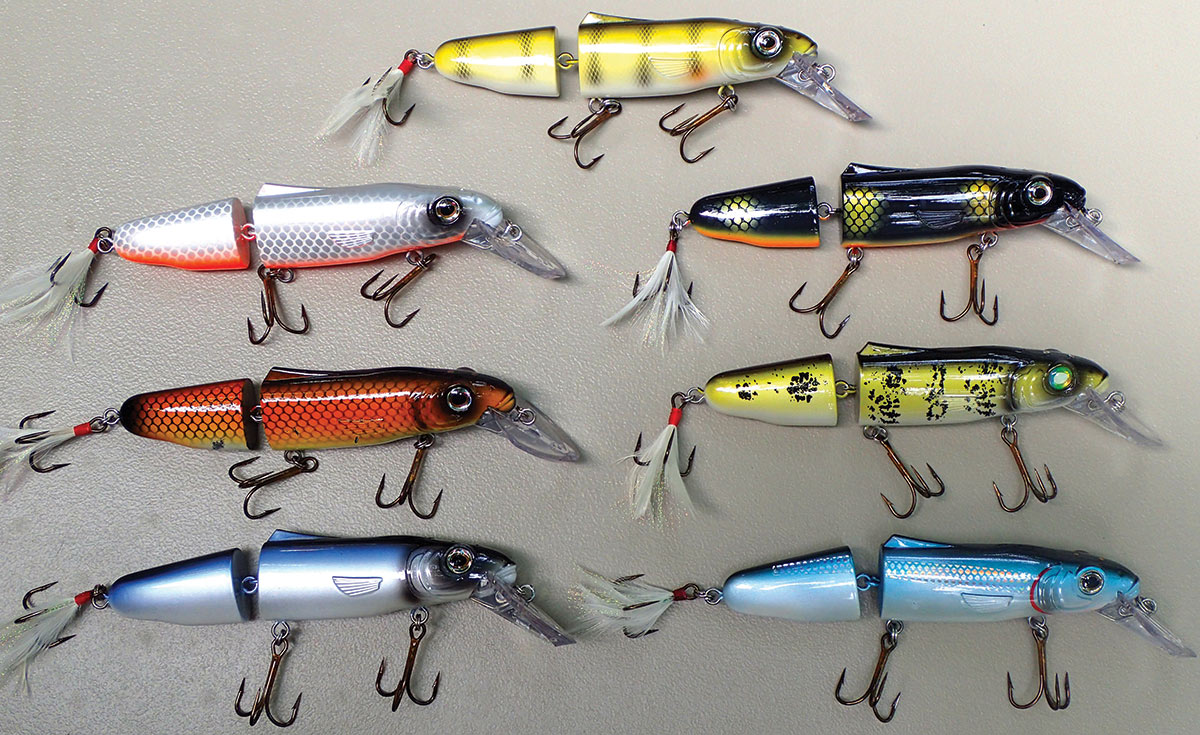
The Word Is Out
During the 2017 season, an angler from Israel and another from England – each in the metropolitan area and looking for a shot at a trophy – had contacted Capt. Dave Vollenweider. It was only a matter of time before word got out on the size and availability of mature muskies in New Jersey. But today was my day, and with storm clouds forming overhead quickly blocking out any sun, Capt. Dave handed me a sheet of paper and pen. On the paper were numbers 1 through 30; foot by foot I entered the temperature as he slowly dropped his Aqua Cal temperature probe. Starting in the 70s the temperature dropped a few tenths of a degree, each foot, until we hit 20 feet and registered 65 degrees.
Five more feet and the temp hit 60 degrees; the thermocline was between 20 and 25 feet deep. Reaching for his Migizi trolling rods we began to put out the new Electronic Baitfish Sounds (EBS) Predator lures by Livingston. Using the Daiwa line counters and letting out the appropriate amount of line, Dave was able to precisely place those lures just above the thermocline. Soon after, we began our searching pattern.
Fishing Greenwood Lake along the New Jersey, New York border for many years has taught Vollenweider to eliminate useless water while helping him key in on his most productive spots. Other things learned through trial and error, were to fish for muskies during the seven day period of the full moon. Evidence points out that predators/prey are more active during this period. Three days prior, the day of, and three days after, are prime times to be hunting muskies, and if a front was moving in, even better. The new moon period is also key to placing odds in your favor.
As the clouds finally blotted out any light, and it appeared as if the heavens would open any second, that’s when the aft rod went off. The fish that hit smashed it so hard that the grooves on the rodholder sheared the hard plastic ridges to flat nubs. Grabbing the rod, I tried to swiftly gain line, but the muskie had other ideas. “Oh my God, it’s a brute,” I shouted.
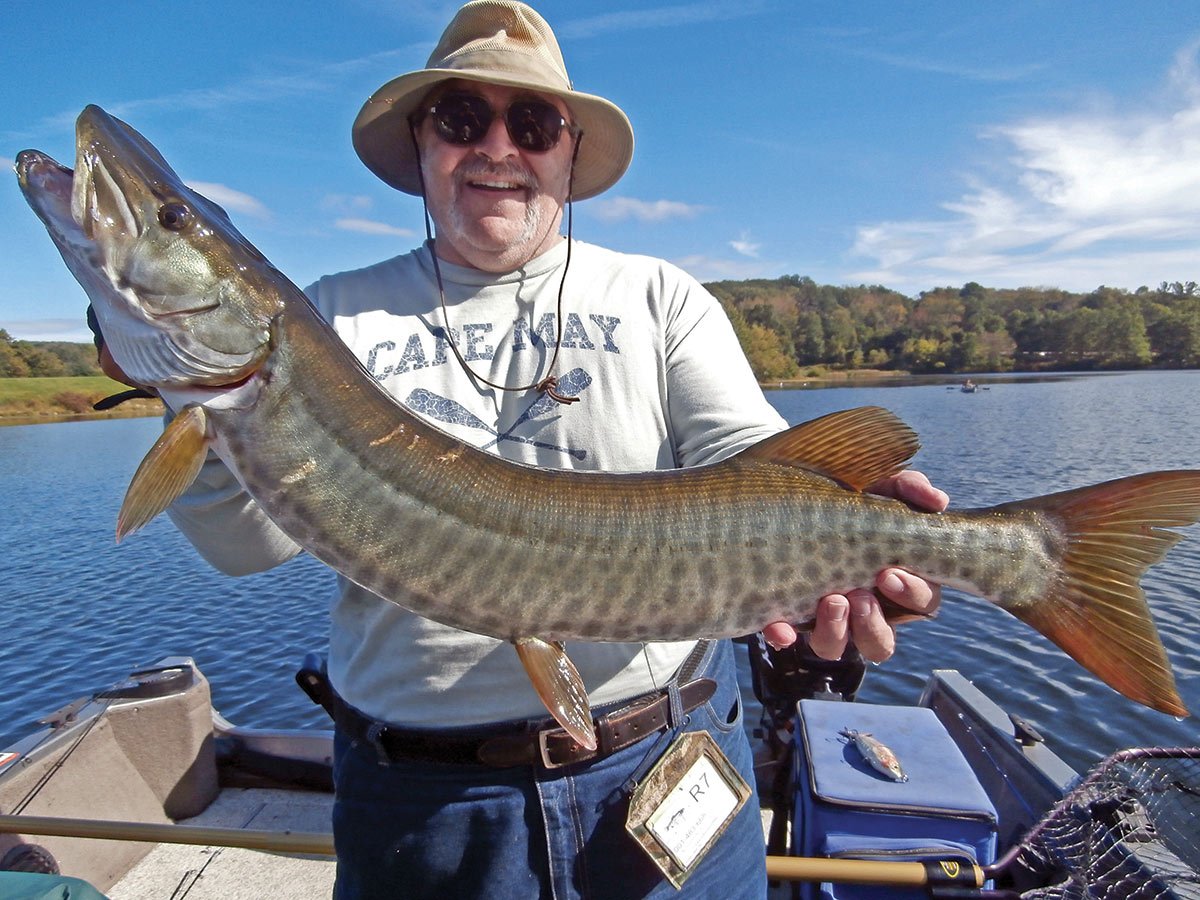
On the Troll
That day’s outing began with information learned more than a year ago, when Vollenweider, owner of Live To Fish Guide Service (862-684-5145) spent a week on the water at Andy Meyer’s Lodge on Eagle Lake in Ontario. Famed muskie hunter Steve Herbeck was to give Capt. Dave a few pointers in muskie trolling while testing prototypes of the new Livingston EBS Predator Series baits that he and Pete Mania helped develop.
“Livingston’s EBS revolution is based on the most powerful science in the world, that of Mother Nature,” said Livingston CEO Fred Battah. “The scientific study of fish biology tells us that fish rely on several physiological elements to hear and locate prey, a lateral line that detects sound vibration, an inner ear near their brain that detects higher frequency sounds, and a swim bladder that acts as a resonating chamber both producing and receiving sound.”
EBS utilizes that science to present predatory fish with a powerful sound attractor, which works well beyond their sight, including in stained, dirty or dark water. Studies conducted at universities proved that fish could hear the EBS lures quadruple the distance than that of rattle filled baits. The technology is automatically activated the second one of the lures hits the water, emitting natural baitfish sounds that trigger bass, walleye and muskies to seek out the source of the sound. Each lure contains an advanced circuit board, smart chip and acoustic chamber inserted and will work for approximately 2,000 applications. Two days prior to my outing, the brothers Rinaldi, Frankie and Anthony of Secaucus, who had reached out to Capt. Dave for some pointers on improving their muskie hunting abilities, met him. Going over precisely finding the thermocline, pointers were given on proper equipment and use of electronics, to find fish or suitable structure. Trolling speeds and the critical element of placing lures just above feeding fish was discussed and implemented.
They then began their search with Capt. Dave explaining, “trolling is the best way to catch numbers of, and big muskies.”
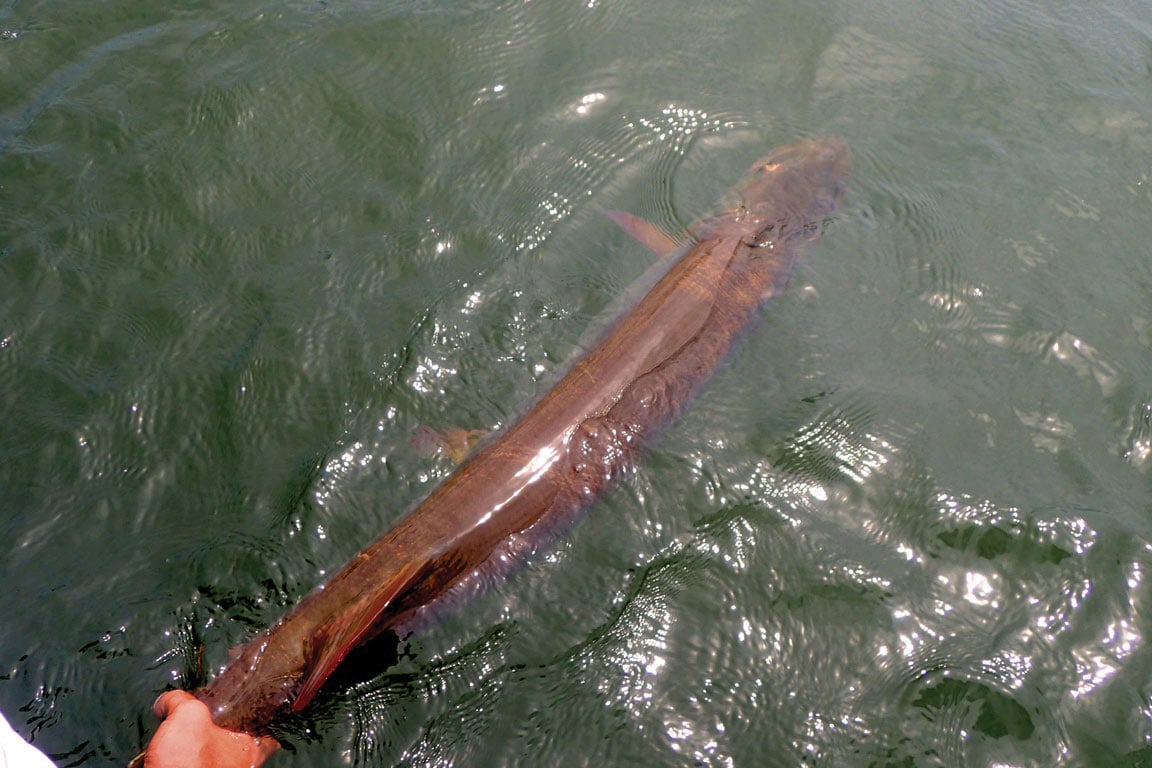
Personal Bests
Two hours went by without a bite. “This is what trolling is about,” Dave said, adding “ hours of taking in the visual beauty of surrounding landscapes, keeping an eye on the electronics, and shooting the bull, followed by moments of sheer excitement and exhilaration.” The key as Dave told his crew was to “be patient and don’t lose focus.” As he made another turn, one of the reels started screaming; Frankie grabbed the rod and was soon hoisting a 3-foot muskie out of Dave’s net. Soon after getting up and running again, another rod went off and Anthony battled a similar sized muskie to boatside.
Trolling the eastern shore next, Frankie was up and at it again, expertly playing a 45-inch, 25-pound muskie into the net. Three muskies? How about four up into the 30-pound class! Crazy? No, this is fishing the full moon, placing the lures properly and sticking with the system. Dave had delivered a once in a lifetime master muskie fishing class. As they loaded the boat onto the trailer, Dave said you couldn’t scrub the smiles off of their faces with a wire brush.
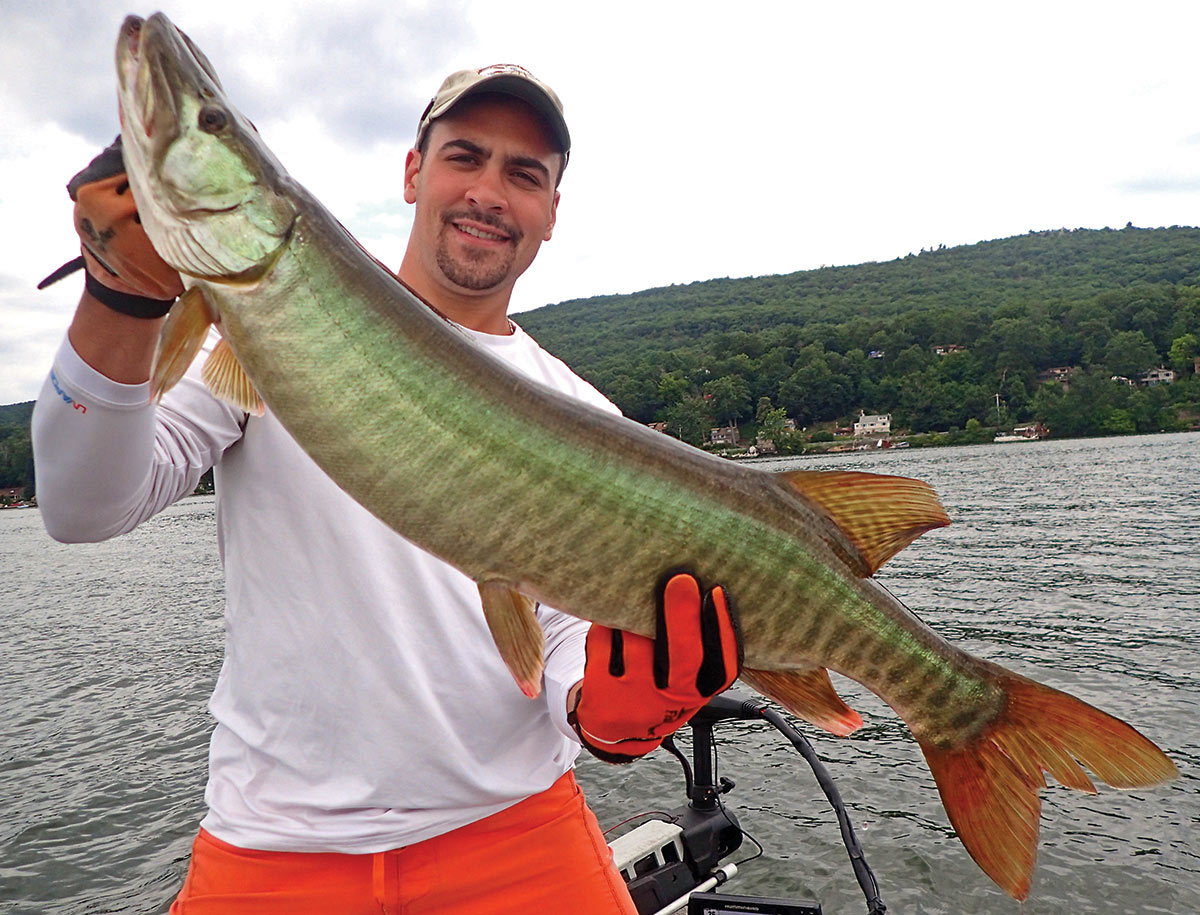
It was two days later that Capt. Dave and I were aboard his 16-1/2-foot Crestliner Fish Hawk fishing two days after the full moon and with a fast approaching front. After going through a similar lesson, the jumping rod and screaming reel proved that we were onto something big. I fought the fish, keeping steady pressure on my unseen quarry while slowly gaining back line. I could see a flash and then heard Dave yell, “Don’t horse it.” Angling it towards the net, I was nearly spent as Dave scooped the 50-inch fish that pushed the 30-pound mark, my personal best.
Muskies are definitely one of the hardest fish to target and pursue successfully, but when you fish the moon phases and use the best equipment that you can afford, you can certainly put the odds in your favor. Remember to carry a large muskie purpose net, and make sure your hooks are razor sharp. Keep your camera on and ready to take a quick memory, and get the fish back into the water as quickly as possible.
By the way, keep an eye out first of the year for new Livingston EBS lures for hybrid stripers and walleye too!
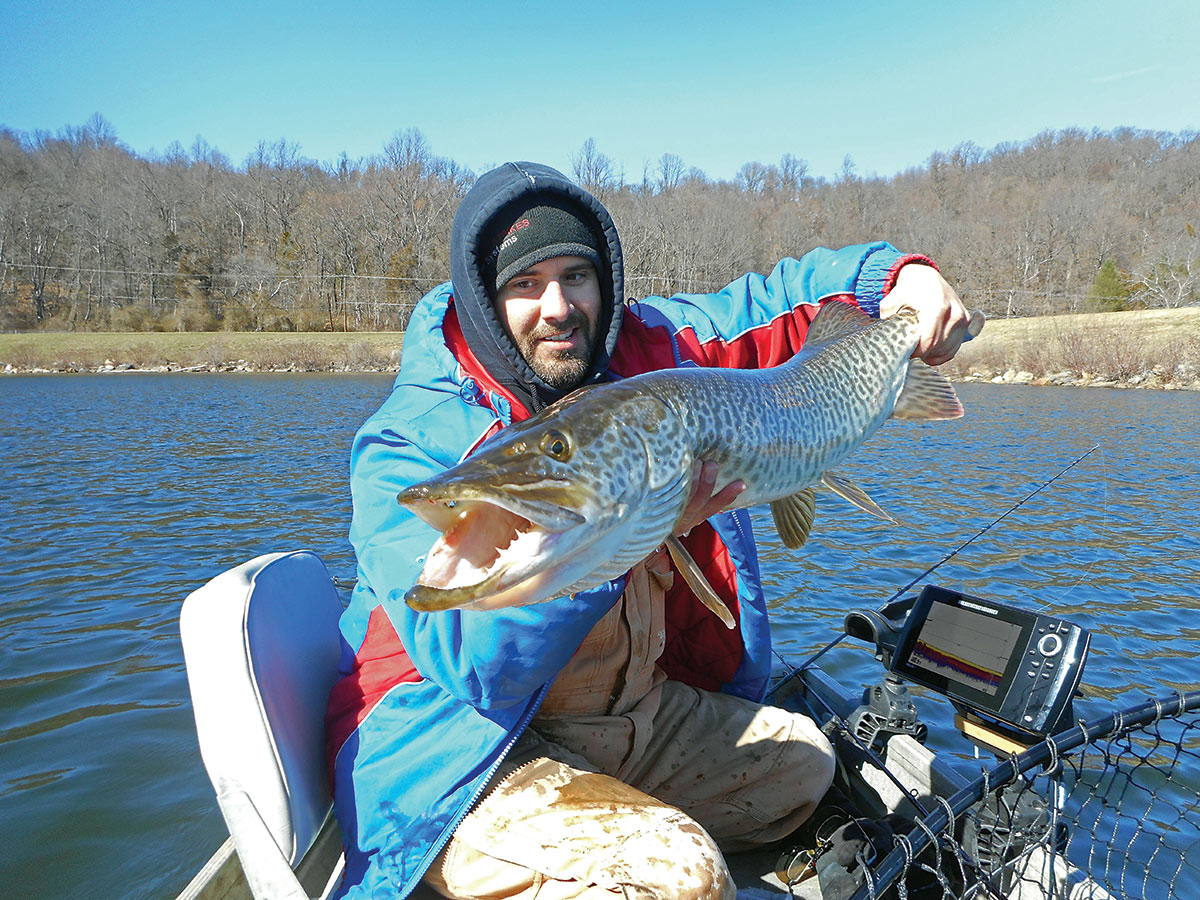
| WHERE & WHEN – NJ MUSKY FACTS |
|---|
|



